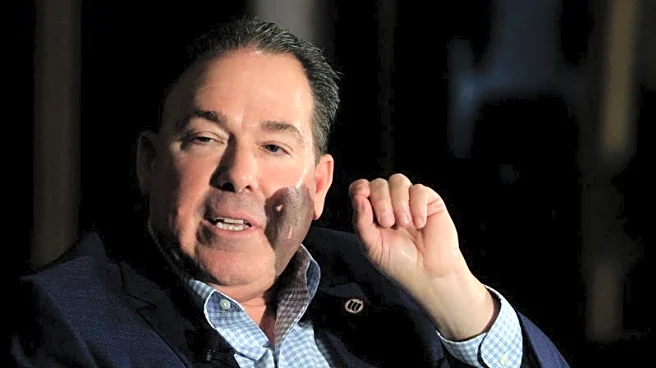What's Happening?
A 63-year-old woman in Massachusetts experienced severe nausea and vomiting due to a gastric bezoar, a large mass of undigested food in her stomach. The condition was linked to her use of semaglutide, a GLP-1 receptor agonist used for type 2 diabetes
and weight management. After losing significant weight, she developed symptoms including abdominal pain and decreased appetite. Medical imaging revealed a dilated bile duct and a mass in her stomach. Doctors opted for a non-invasive treatment using diet soda to dissolve the bezoar, a method supported by existing evidence. The patient was administered 1.5 liters of diet cola, which successfully dissolved the mass, alleviating her symptoms.
Why It's Important?
This case highlights an unconventional yet effective treatment for gastric bezoars, which are rare and often misdiagnosed due to common symptoms. The use of diet soda presents a cost-effective and less invasive alternative to surgical procedures, reducing potential complications. The case also underscores the importance of monitoring side effects of medications like semaglutide, which can cause delayed gastric emptying and contribute to bezoar formation. This treatment approach could influence future medical protocols for similar cases, offering a simpler solution for patients with stable conditions.
What's Next?
Following the successful treatment, the patient was discharged without restarting semaglutide but was prescribed daily acid reflux medication. Her appetite improved post-discharge, and her weight rebounded slightly. The case may prompt further research into the mechanisms by which soda dissolves bezoars, potentially refining treatment guidelines. Medical professionals might consider diet soda as a first-line treatment for stable patients with food-related bezoars, potentially reducing the need for invasive procedures.
Beyond the Headlines
The case raises questions about the broader implications of using common beverages in medical treatments, challenging traditional perceptions of soda as merely a dietary indulgence. It also highlights the need for awareness regarding the side effects of popular weight management drugs, encouraging more comprehensive patient education and monitoring. The success of this treatment could lead to increased interest in exploring other unconventional methods for managing rare medical conditions.














